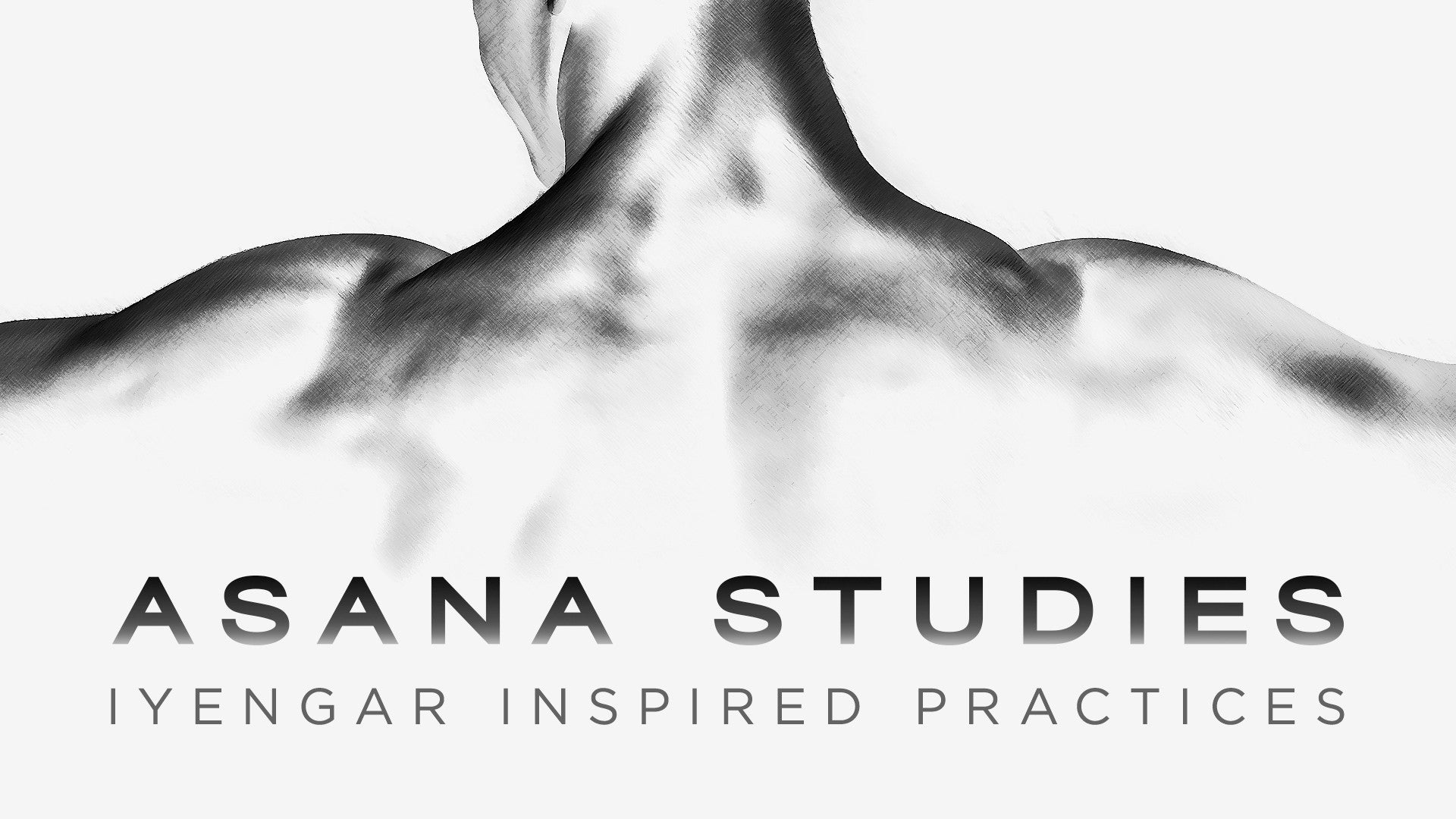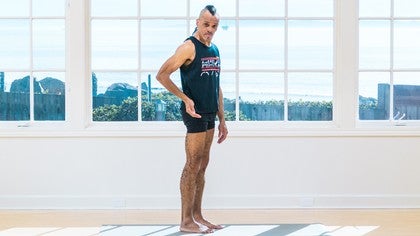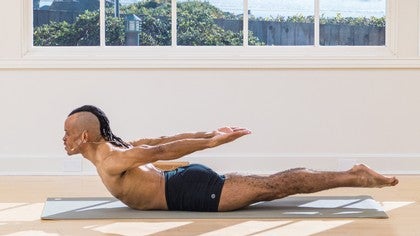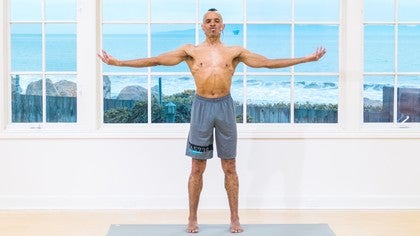Description
About This Video
Transcript
Read Full Transcript
Hello. We're going to talk now about pelvic shaping. Pelvic shaping is, the movements that happen in the pelvis. There are energetic movements. There are subtle movements of the bones in relationship to each other.
And there are movements that enhance the fluid quality of the pelvis. We want to keep in mind that the element in the pelvis is water. Fluid. So we want to be aware that that is the energy there, the quality there, and the element there. And we want to access a way of sensing and feeling the movement of the bones of the pelvis as a container, which also becomes the substructure of the feeling of fluidity in the pelvis.
Becomes the dynamic, energetic movements and feeling of the bones in the pelvis, to enhance the quality of fluidity in the pelvis. Now, pelvic shaping has a ripple effect from there up, to the spine, to the crown of the head, and also down through the legs. The action of the feet and legs ultimately shape the pelvis. And as they shape the pelvis, they, in doing so, promote, activate, actualize pelvic shaping. So, this gets to the element of connectivity.
So when we're moving, we wanna have a sense of connectivity, a wholeness, a relationship, of the bones, to the muscles, to the breath, to the mind, the wholeness of the body and the spirit, therein and there out. So, in pelvic shaping, what happens is, the top of the thighs internally rotate. The hip points narrow. The two bony muscles at the top, the front of the hip. The hip points narrow.
The groins deepen. And when that happens, the sacrum widens and the tail drops. That's the poetry. That's the language we use. Top of thighs internally rotate, hip points narrow, groins deepen, sacrum widens, tail drops.
So we get this thing happening. There is very much a three-dimensional quality to it, and now we're talking about the rotational and the sagittal, and the vertical, and the sagittal back, and the spreading, lateral spreading, and the enclosing, and the sinking of the tail, and the lift that happens. So, these movements, the words that describe these movements, are words that are important because they talk about the movements of the bones in relationship to each other, and the effect of the movement of those bones in relationship to each other. So, top of the thighs internally rotate. Hip points narrow, groins deepen.
Sacrum widens, and the tail, the coccyx drops. Now, the pelvis is a three-dimensional shape. The pelvic floor is three-dimensional as well. The sit bones are the bottom most bones in the pelvis, and the sit bones are right about here at the back of the pelvis. The coccyx, the tail, is in between the sit bones.
The coccyx, the tail, always is in this shape. The sit bones have a possibility of being directional in quality. They can have a spacial quality of reach. So even though if I'm like this, and my sit bones are reaching down and back as I do this movement, it causes my pelvis to tilt forward, the sit bones are lifting and reaching, the coccyx, the actual anatomic tail, is still dropping. So speaking about head-tail movements, we could be speaking about the pelvic floor, and specifically the sit bones, lifting or dropping.
In either case, the tail, the coccyx, is like so. And the sit bones may go one way or the other about and around that. Okay. So the pelvic shaping, the upward ripple effect can have a profound effect on back bends. So, the thoracic fulcrum, the movement in the upper spine, that happens here.
And then further above that, there is movement in the upper spine further up. When we do back bends, the tricky thing in back bends is to get the upper spine, which is between the scapula, which is behind me, right about here, the upper spine. Okay? The middle spine is in this area, lower spine is down here. So we want to get the upper spine to move as much as possible, in back bending.
You see, the natural curves of the spine are such that the lower spine naturally does this, it back bends, it extends. The trick is, is to get the upper spine to move and back bend. So, pelvic shaping can play a real intimate role in that happening. So what happens is, with that, as the top of thighs internally rotate, the hip points narrow, the groins deepen, we get this, which is a lower back bend, extension of the spine. Sacrum widens as the tail drops.
It's almost as if the tail dropping, the coccyx dropping, provides an anchor, as if there were something right here that moved the spine forward, and then we back bend over that. So. Top of thighs internally rotate, hip points narrow, groins deepen, sacrum widens, tail drops, the heart opens. It's very important in back bending because in back bending, as I said, this movement of the spine is relatively accessible to most of us. This movement of the spine is relatively accessible to most of us.
However, the upper spine, getting the upper spine to move, is tricky. Getting the upper spine to move in response to the foot and leg shaping is a wonderful thing, because it provides access, and a place from which to reference the movements of the spine, but also, the movements of the head in the back bend, as all movements of the head, though occur here, originate in the upper spine. So, how that shows up is that, top of thighs internally rotate, hip points narrow, groins deepen, sacrum widens, as the tail drops, the spine goes forward, and I back bend. And then from there, if I'm going to add the head off of that, the movements of the head and the back bend occurring in the neck, but originating, the impetus being in the upper spine, I'll take the head back, to look up. Much time in back bending, we will see people do this.
So this is a movement of the head that's disconnected from the movement of the upper spine. So, sure, we can look up like this all day long. Watch little babies. When they look up, they don't go like this. They go like this.
The baby's sitting on the floor, the mother calls from behind. The baby doesn't go like this. The baby goes like this. There's a full, dynamic shape change that facilitates the head, and the intention of the baby looking towards its mother. So we wanna have a sense that, from the pelvis shaping, we get upper spine movement, and then get a whole movement of the head off of that, where the head, to go into the back bend, to be an expression of, if we so choose, part of the back bend, we connect the head to the back bend by letting the head go back.
Back, to look up. These bones at the base of the skull, the occipital bones, they don't just go down to look up. They go actually back, back and down, so I can look forward and up. And try to keep that going. And even partway through, avoid this.
But rather, let it be upper spine. Pelvic shaping. Thank you.
Asana Studies: Chris Hoskins
Comments
You need to be a subscriber to post a comment.
Please Log In or Create an Account to start your free trial.













